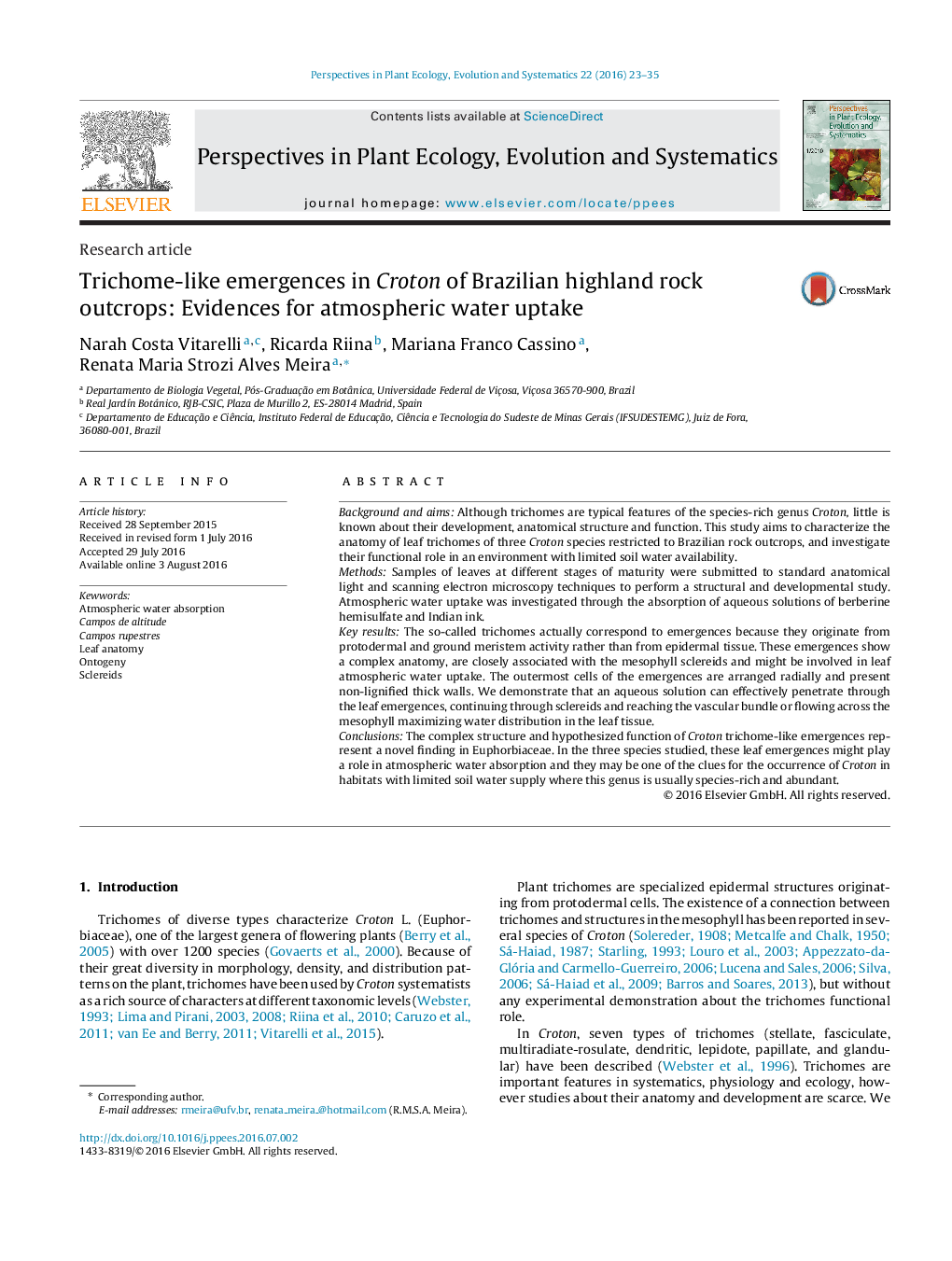| کد مقاله | کد نشریه | سال انتشار | مقاله انگلیسی | نسخه تمام متن |
|---|---|---|---|---|
| 4400895 | 1618598 | 2016 | 13 صفحه PDF | دانلود رایگان |
• The so-called trichomes on the leaves of the species of Croton studied correspond in reality to emergences.
• The complex structural anatomy of these leaf emergences increases the surface area for absorption of atmospheric moisture.
• We show experimentally that an aqueous solution can penetrate into the leaf emergences, continue through sclereids, and finally reach the vascular bundle or the mesophyll, maximizing water distribution in the leaf tissue.
• Emergences likely play an important role in atmospheric water absorption in Croton species and might be one of the clues for the evolutionary success of this highly diverse Angiosperm genus.
Background and aimsAlthough trichomes are typical features of the species-rich genus Croton, little is known about their development, anatomical structure and function. This study aims to characterize the anatomy of leaf trichomes of three Croton species restricted to Brazilian rock outcrops, and investigate their functional role in an environment with limited soil water availability.MethodsSamples of leaves at different stages of maturity were submitted to standard anatomical light and scanning electron microscopy techniques to perform a structural and developmental study. Atmospheric water uptake was investigated through the absorption of aqueous solutions of berberine hemisulfate and Indian ink.Key resultsThe so-called trichomes actually correspond to emergences because they originate from protodermal and ground meristem activity rather than from epidermal tissue. These emergences show a complex anatomy, are closely associated with the mesophyll sclereids and might be involved in leaf atmospheric water uptake. The outermost cells of the emergences are arranged radially and present non-lignified thick walls. We demonstrate that an aqueous solution can effectively penetrate through the leaf emergences, continuing through sclereids and reaching the vascular bundle or flowing across the mesophyll maximizing water distribution in the leaf tissue.ConclusionsThe complex structure and hypothesized function of Croton trichome-like emergences represent a novel finding in Euphorbiaceae. In the three species studied, these leaf emergences might play a role in atmospheric water absorption and they may be one of the clues for the occurrence of Croton in habitats with limited soil water supply where this genus is usually species-rich and abundant.
Journal: Perspectives in Plant Ecology, Evolution and Systematics - Volume 22, October 2016, Pages 23–35
